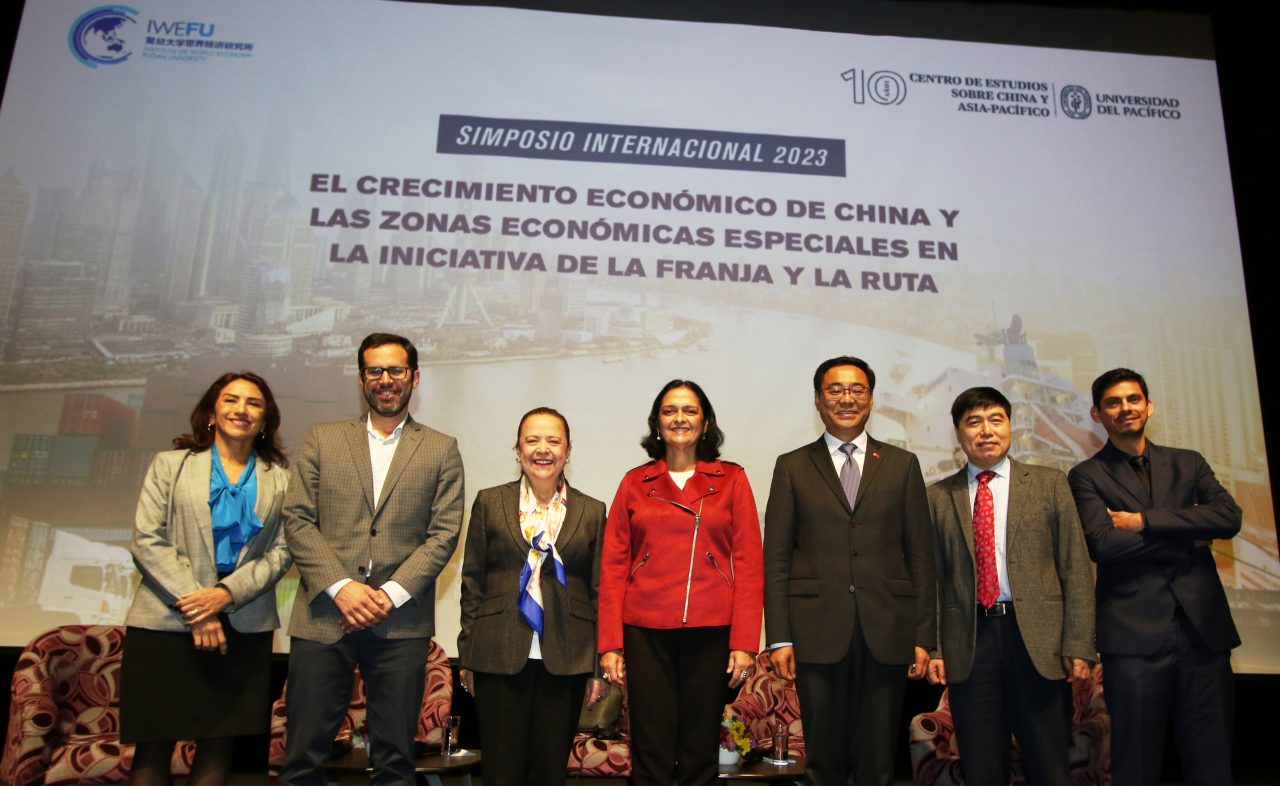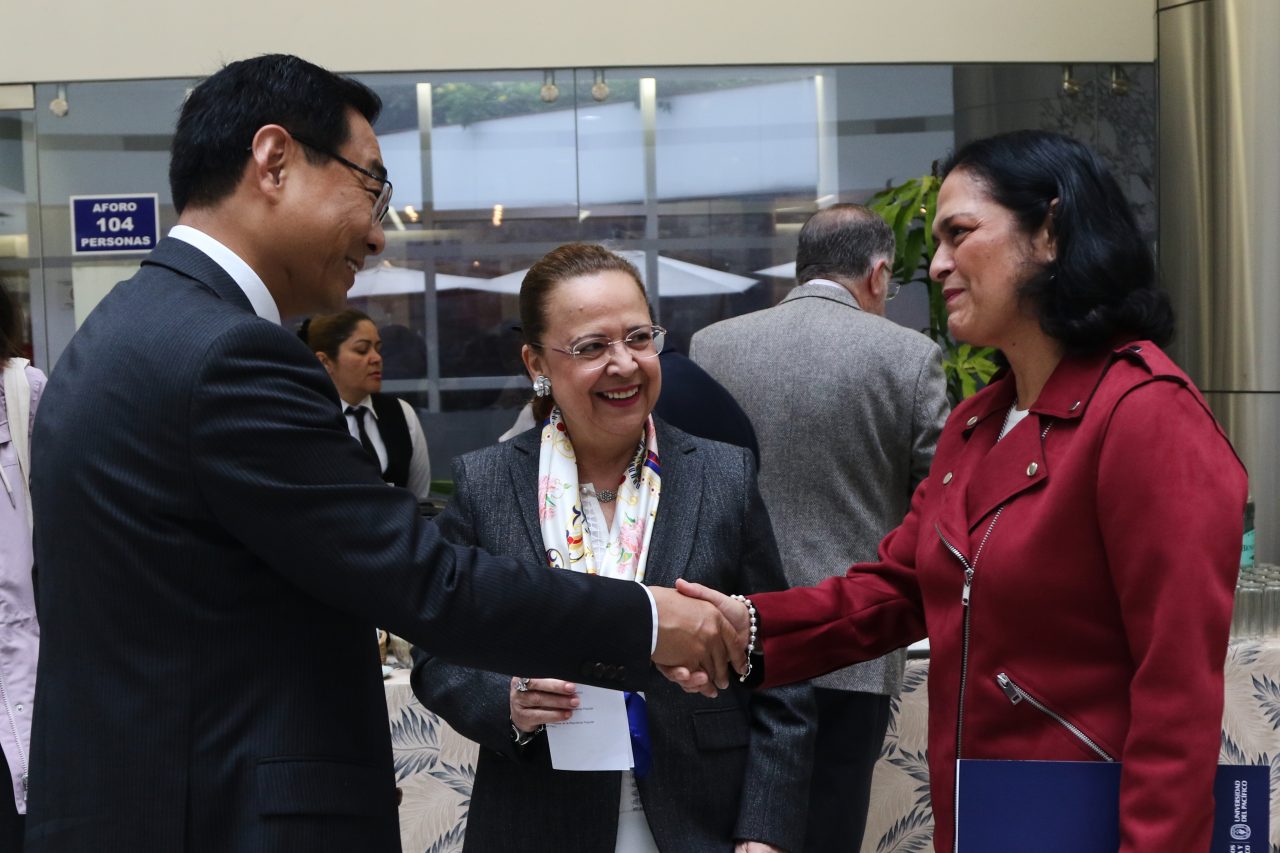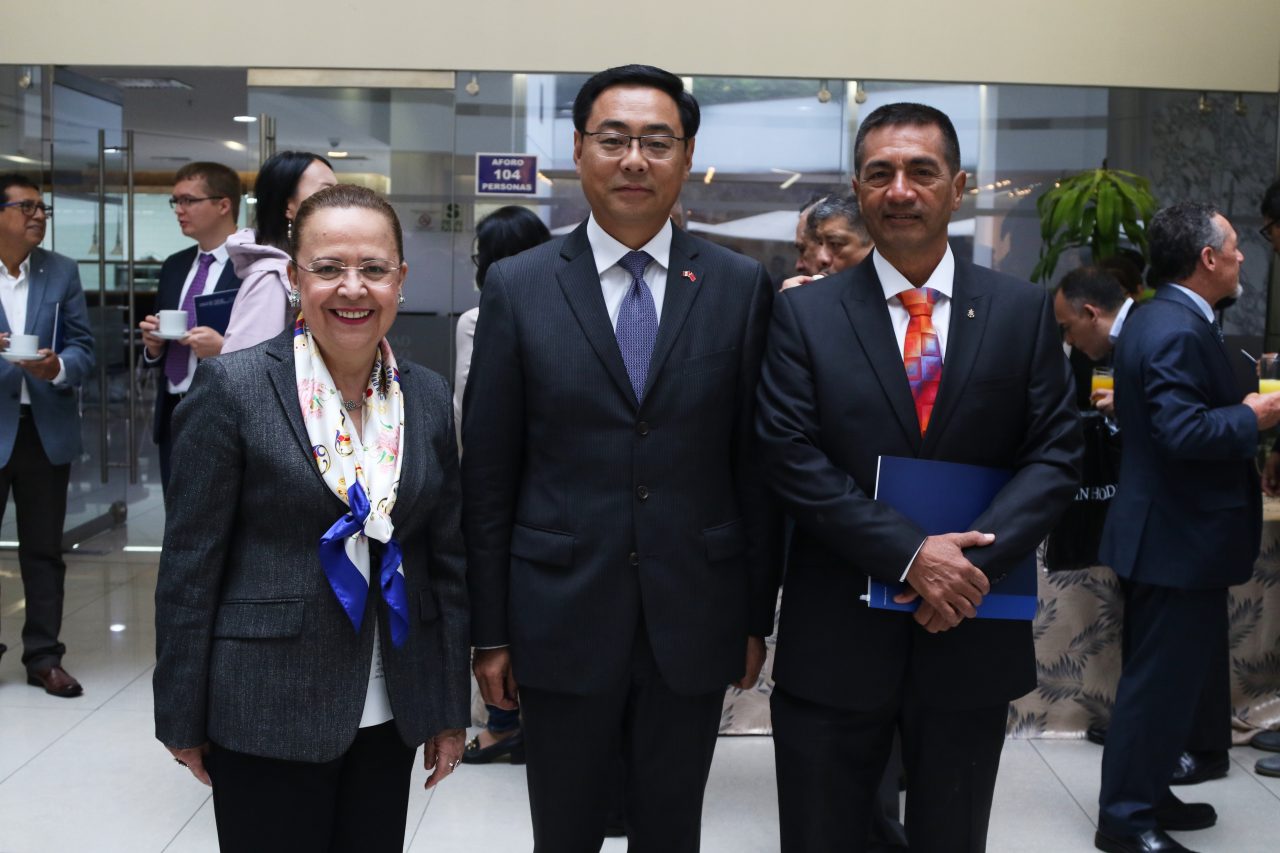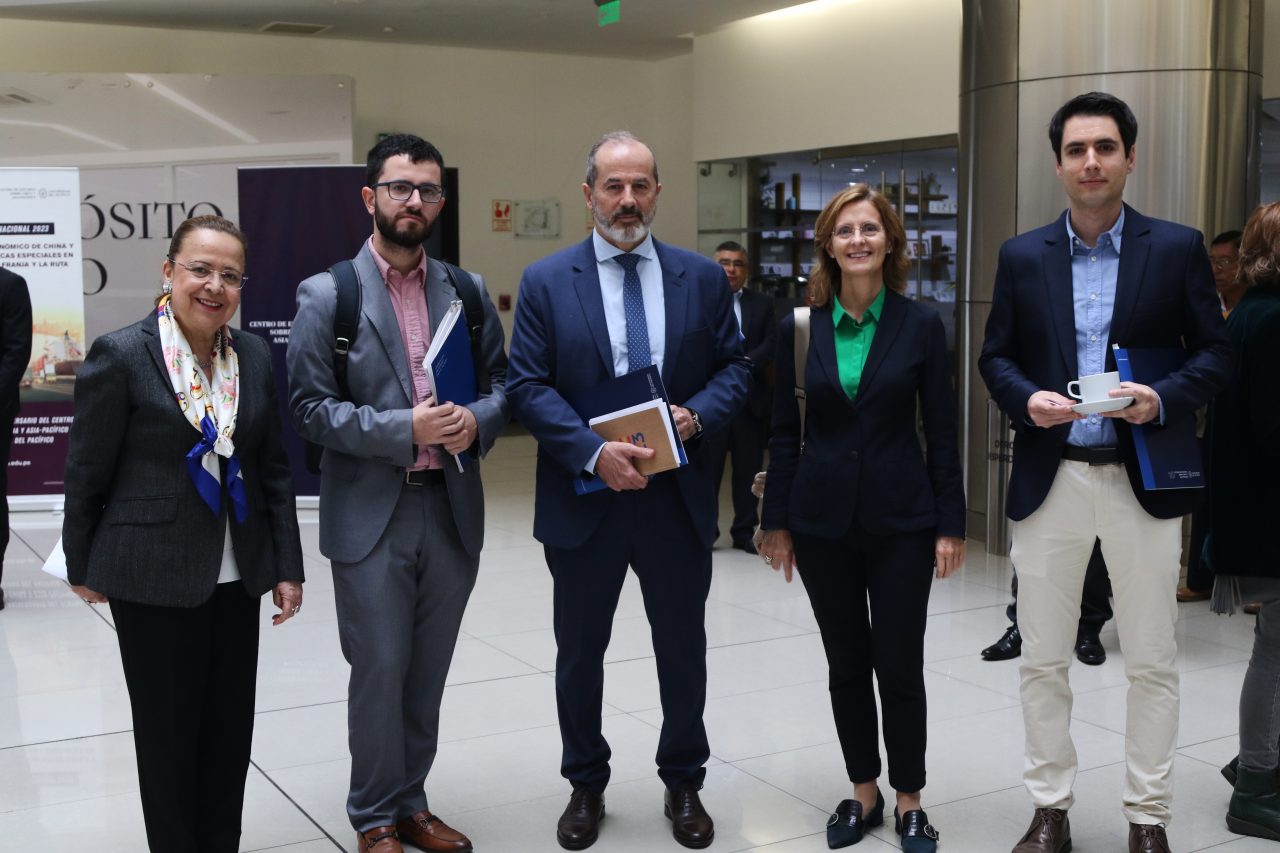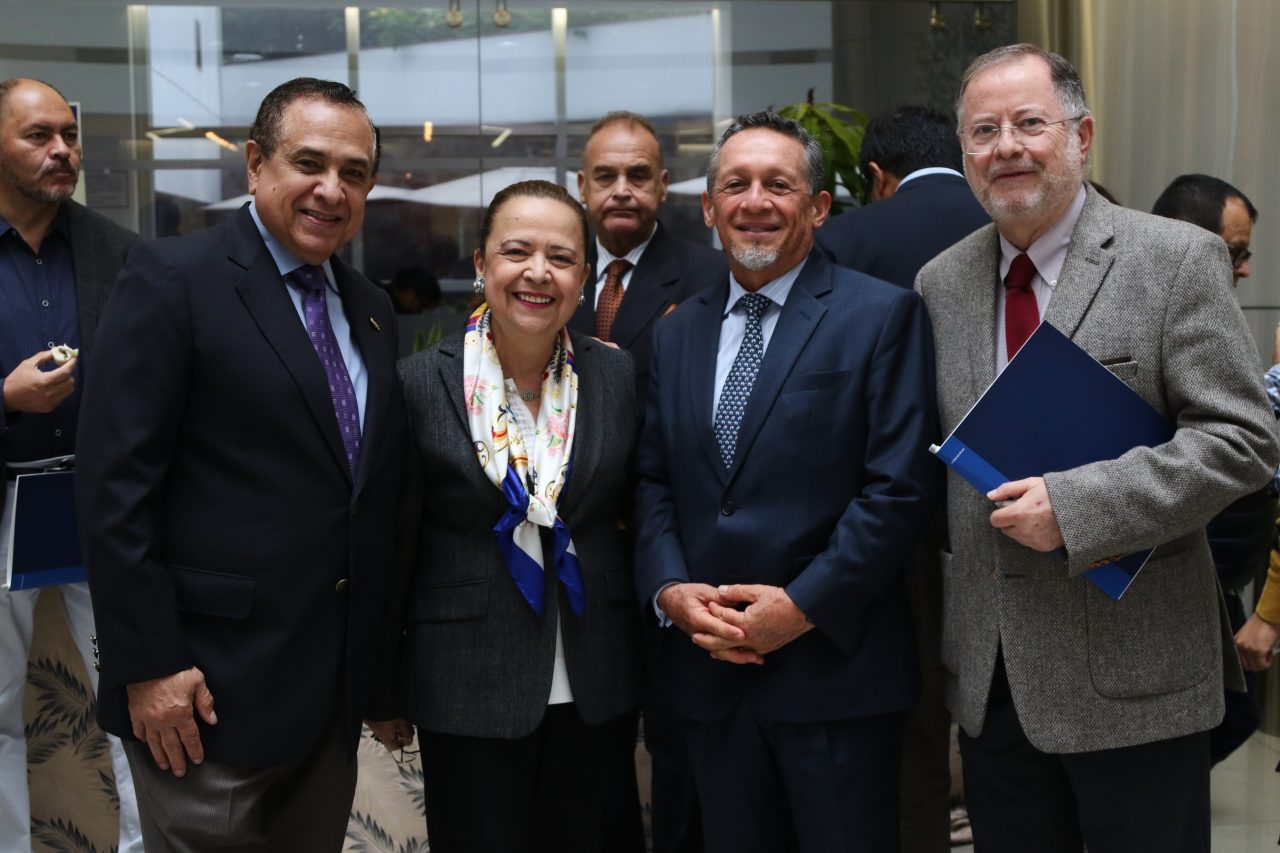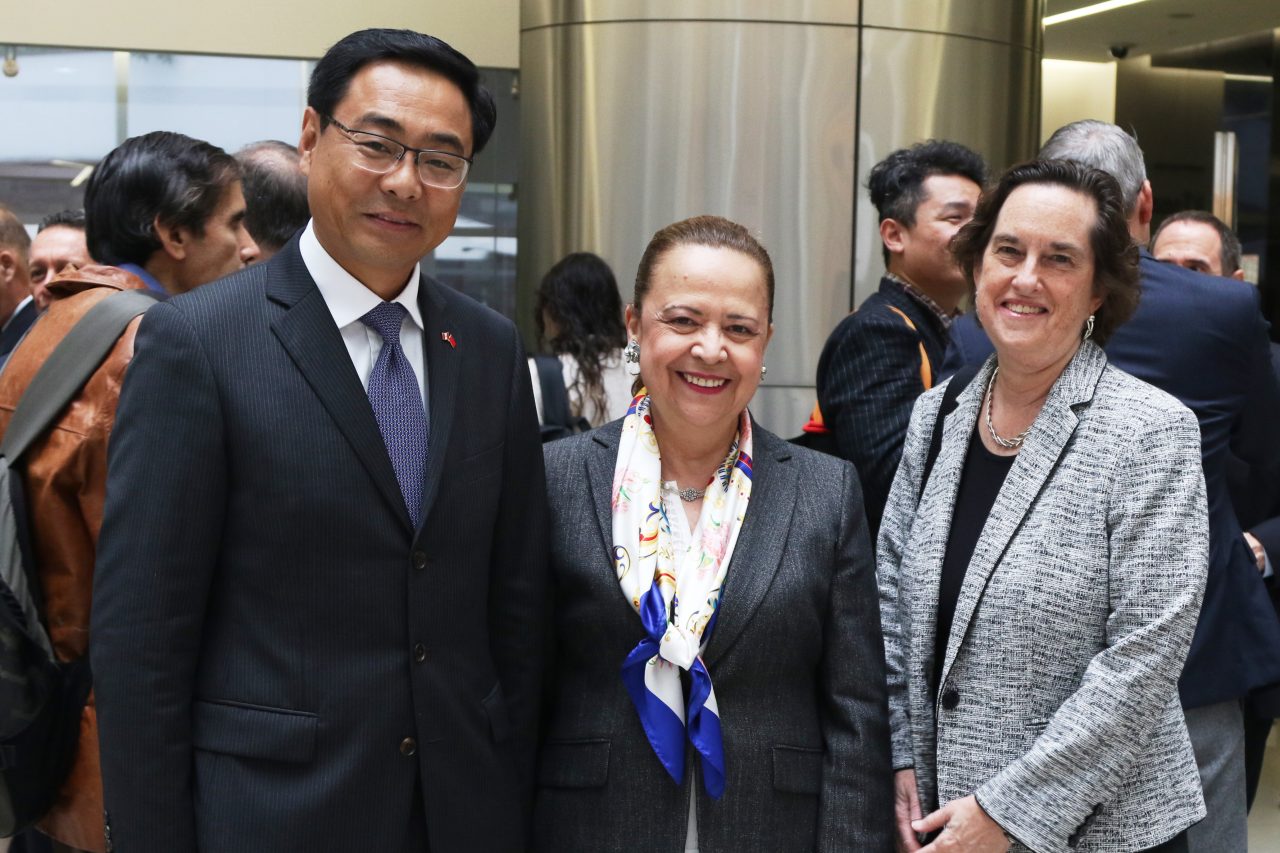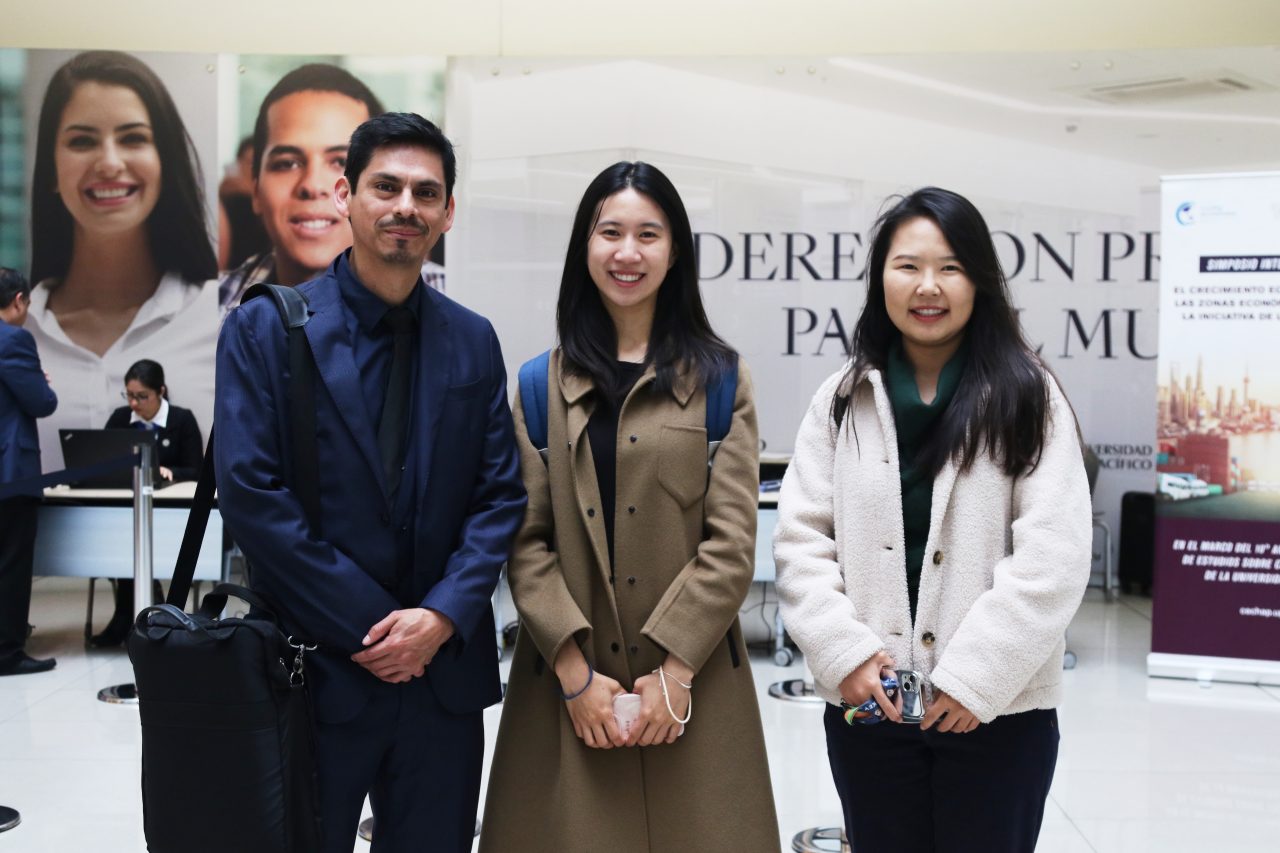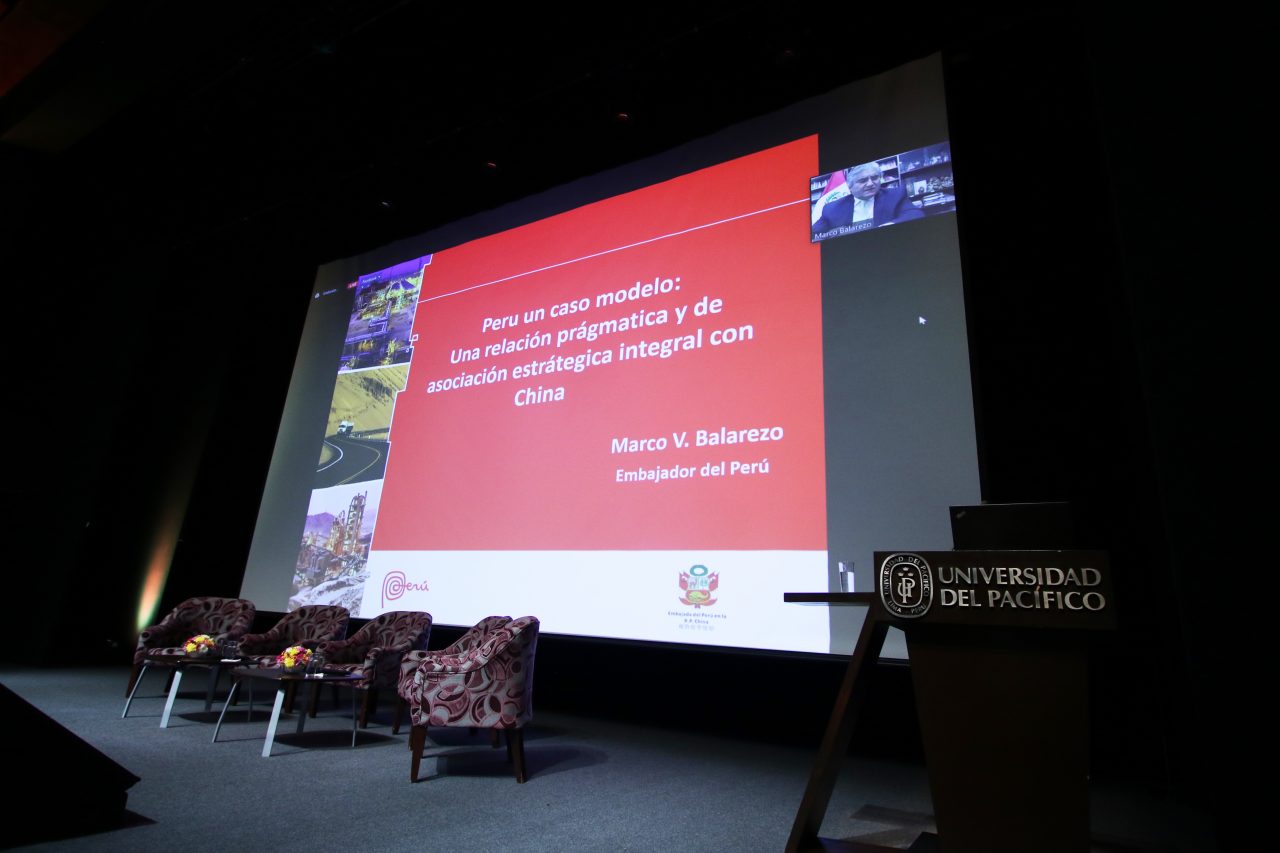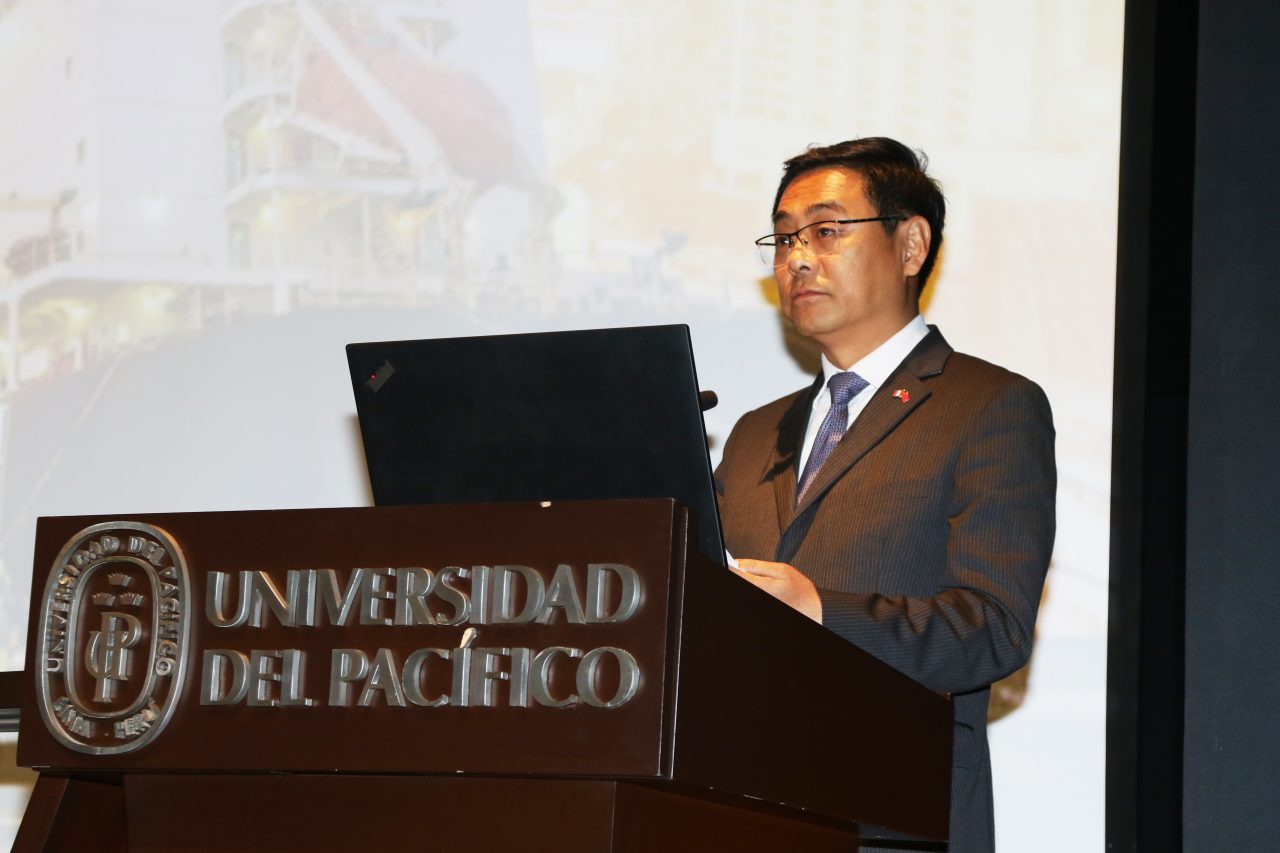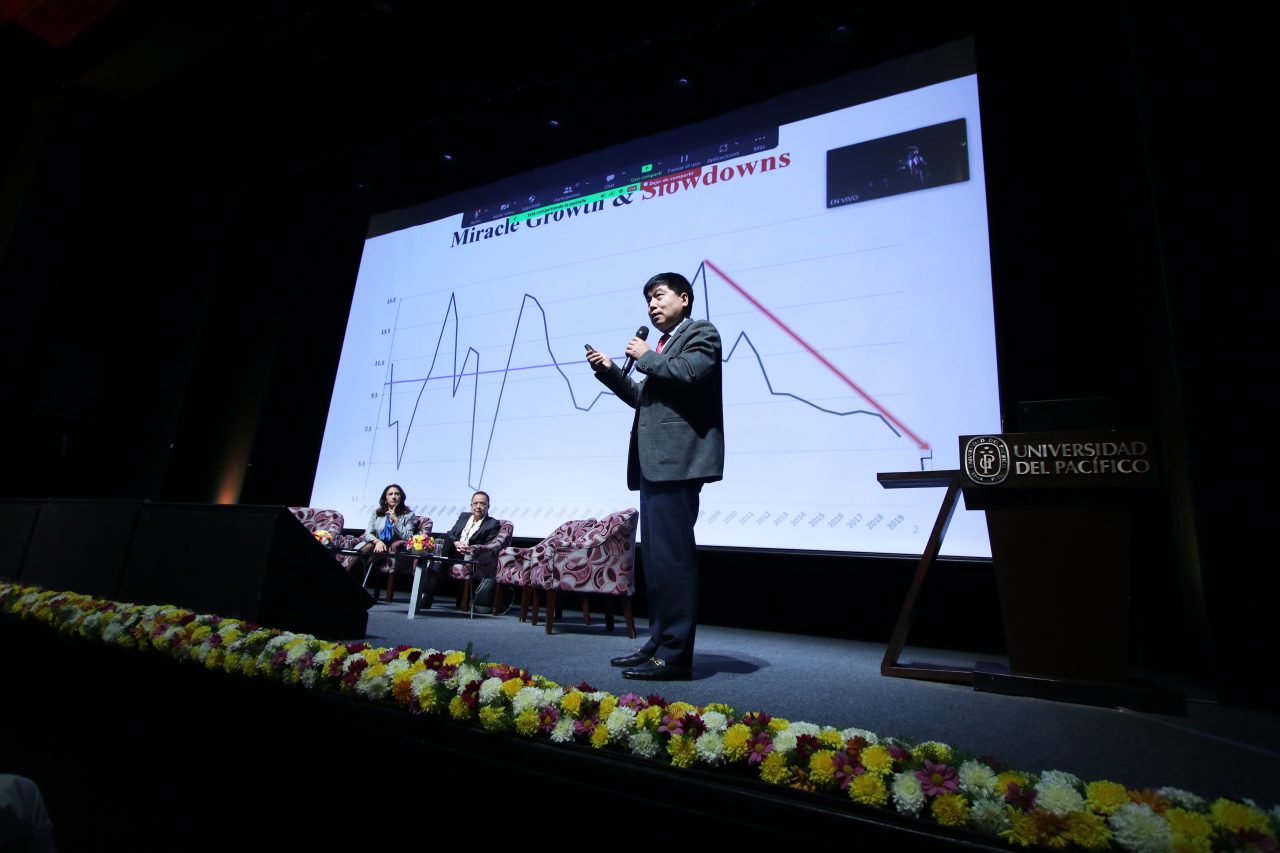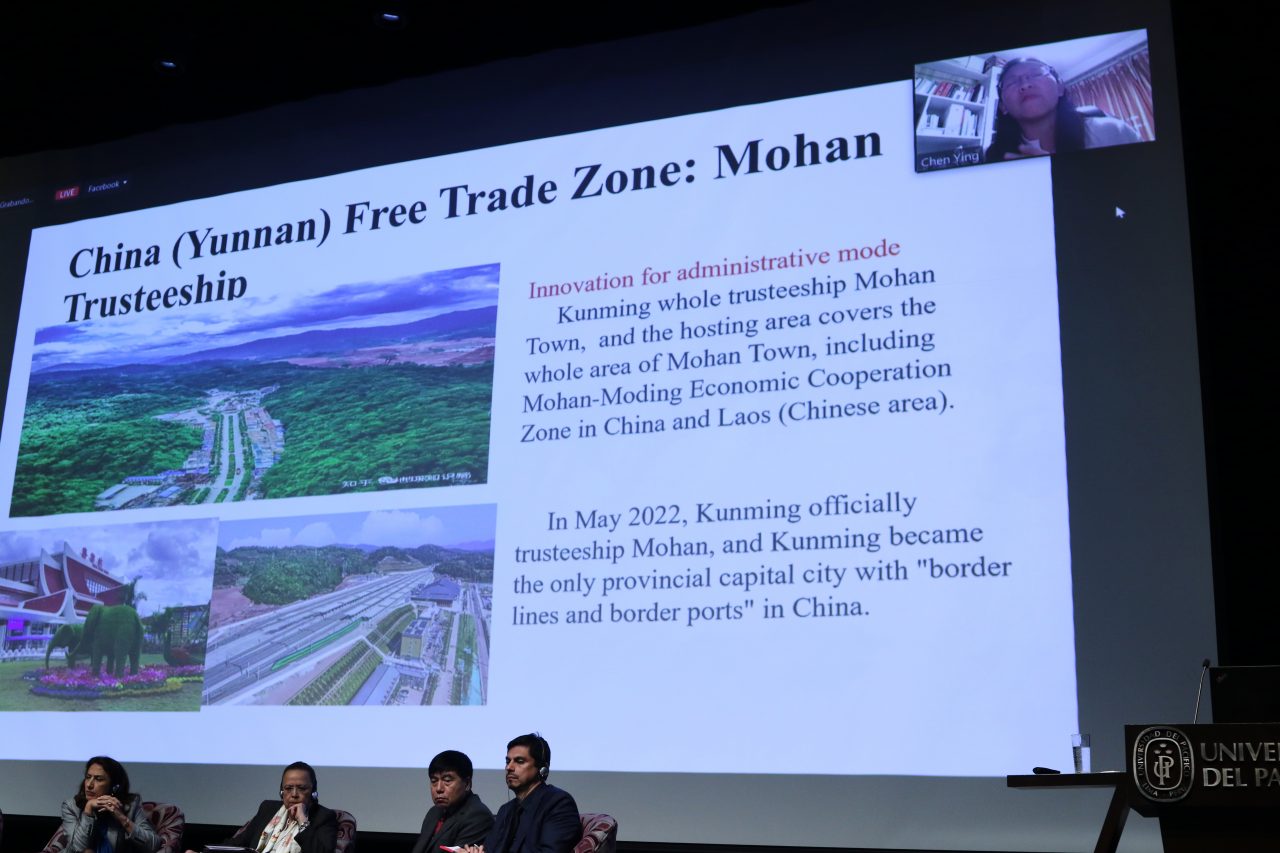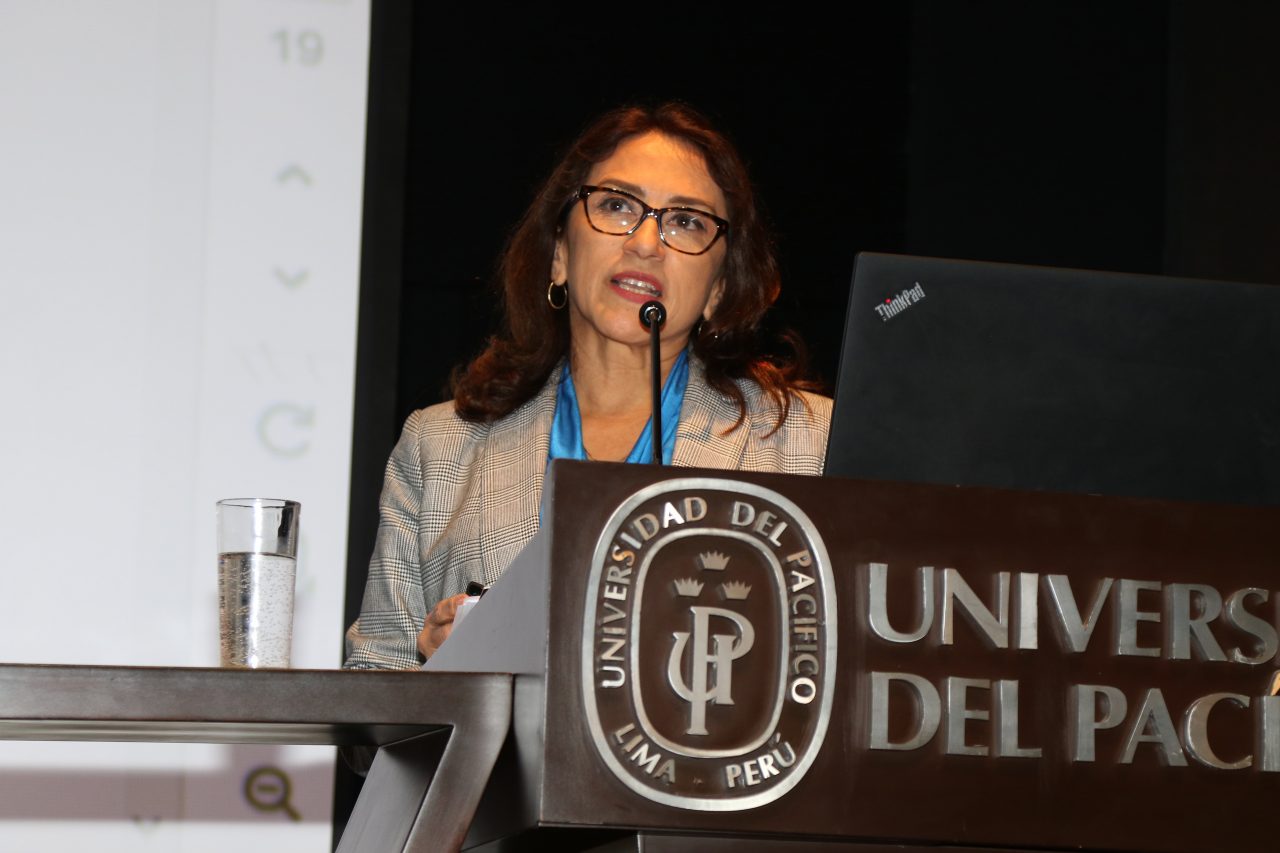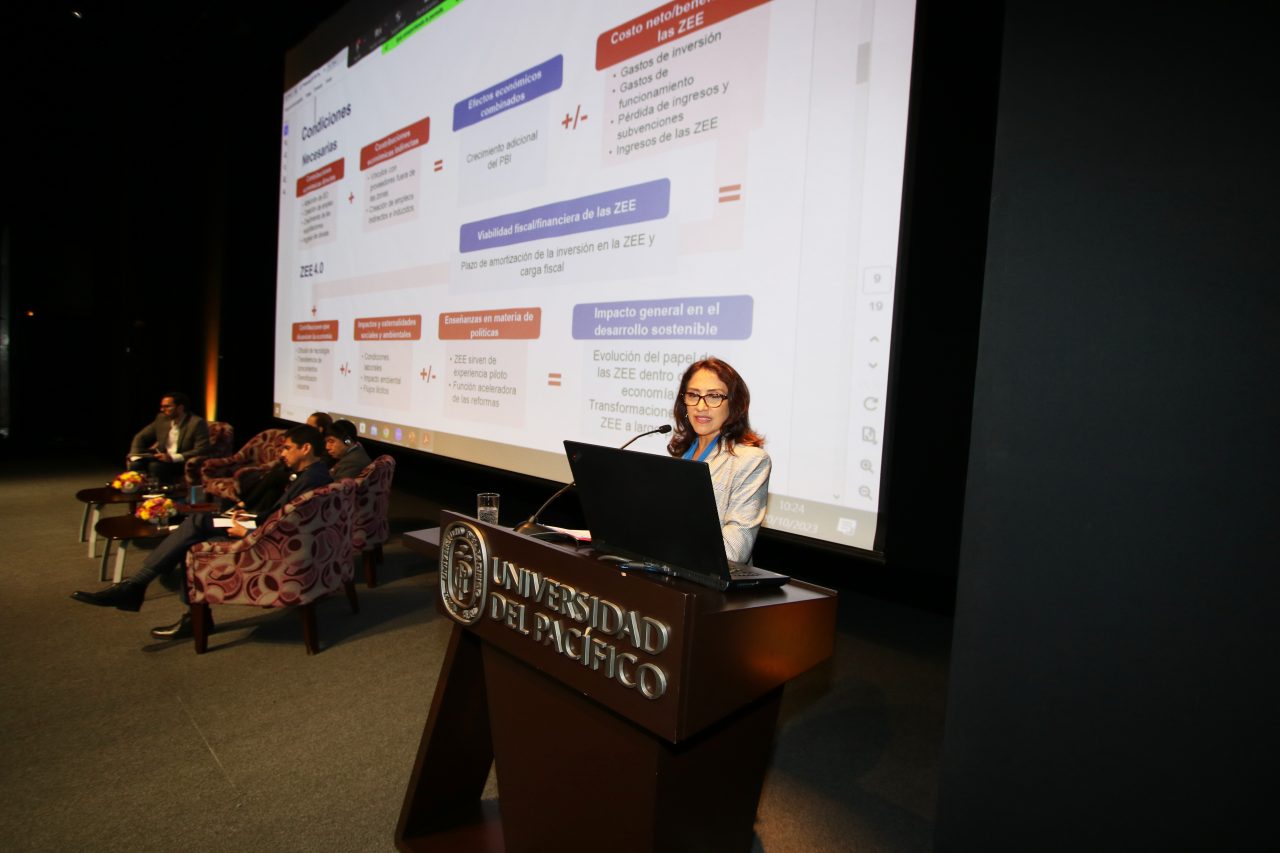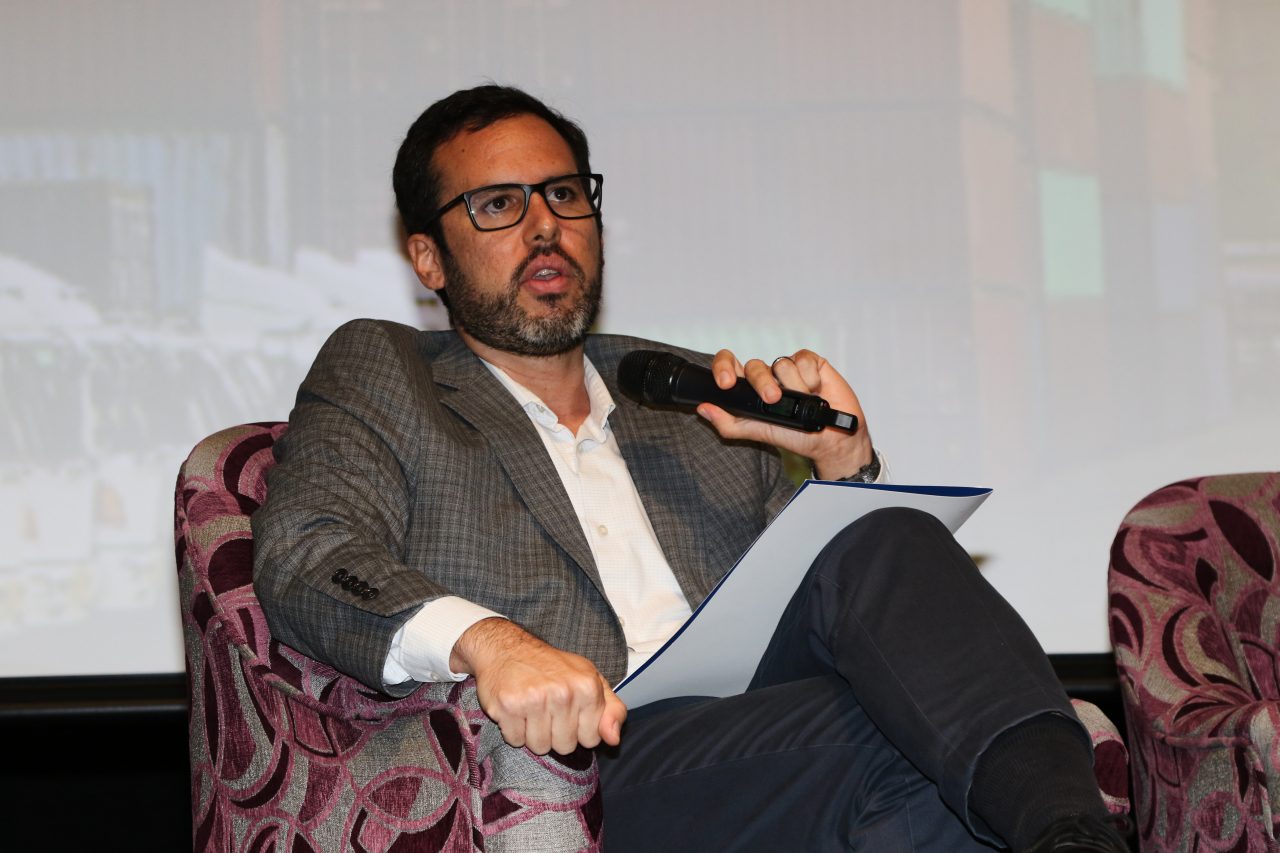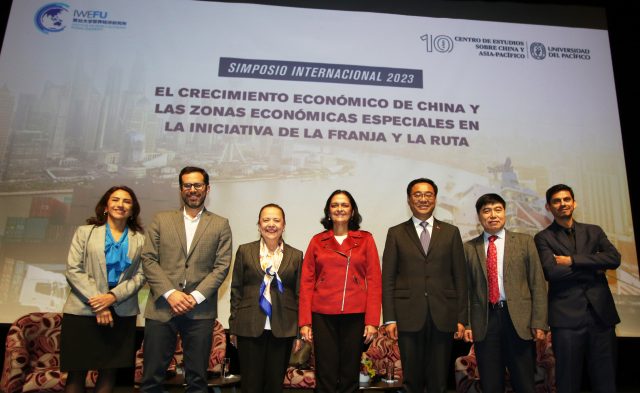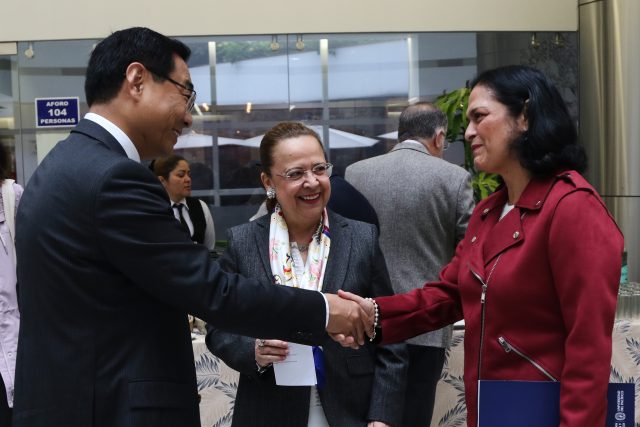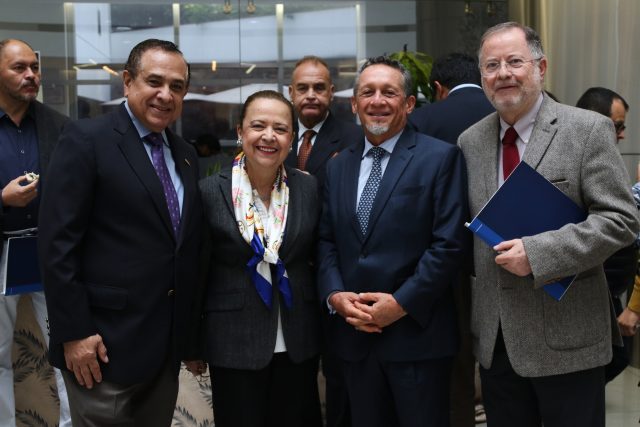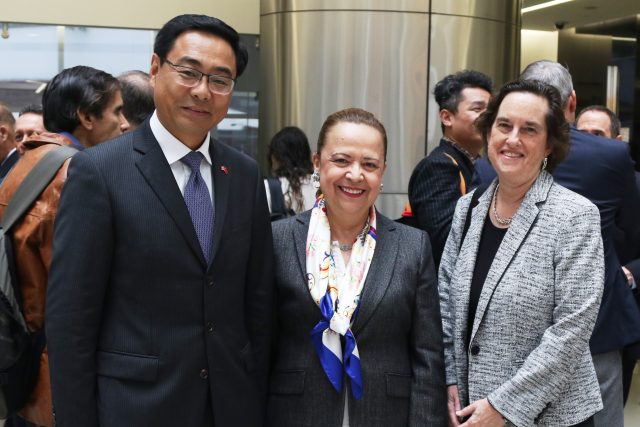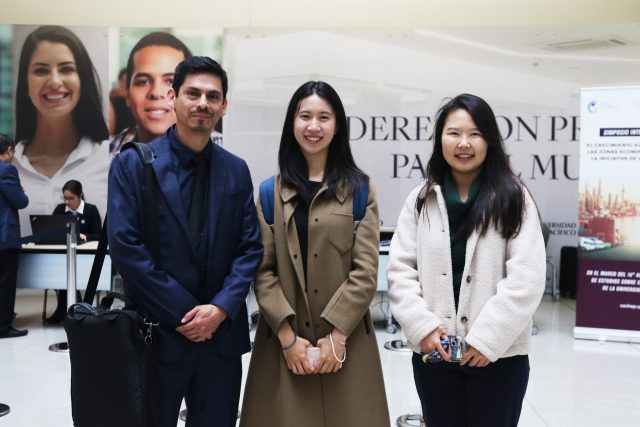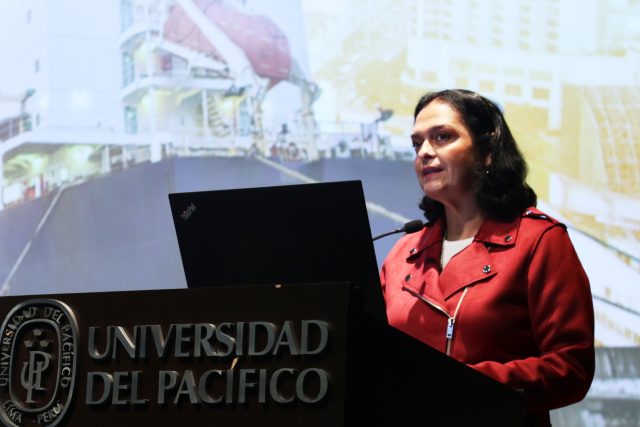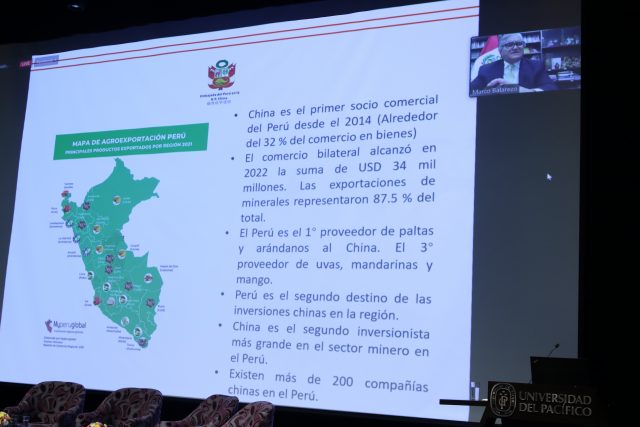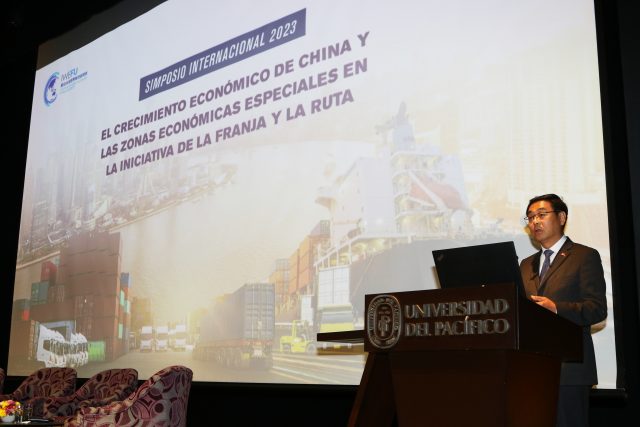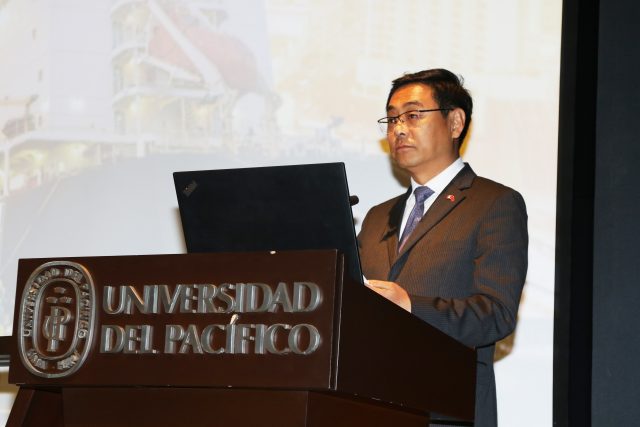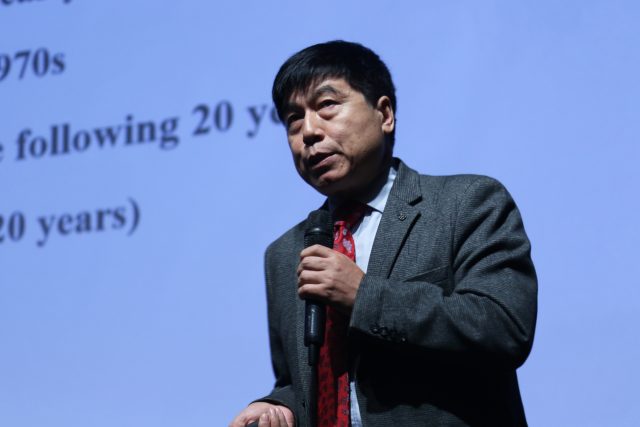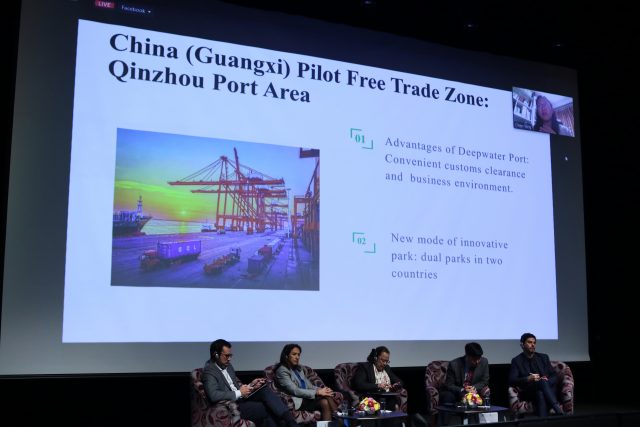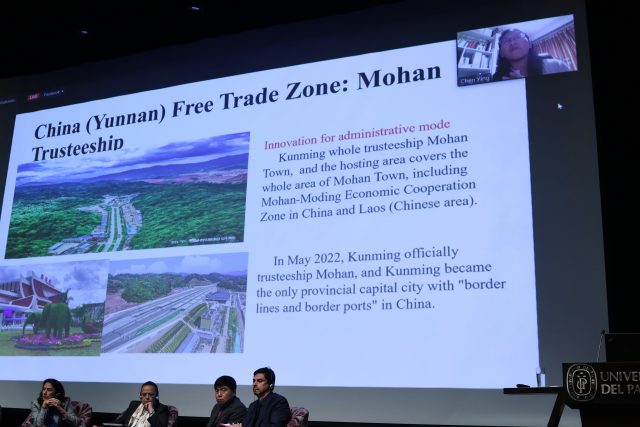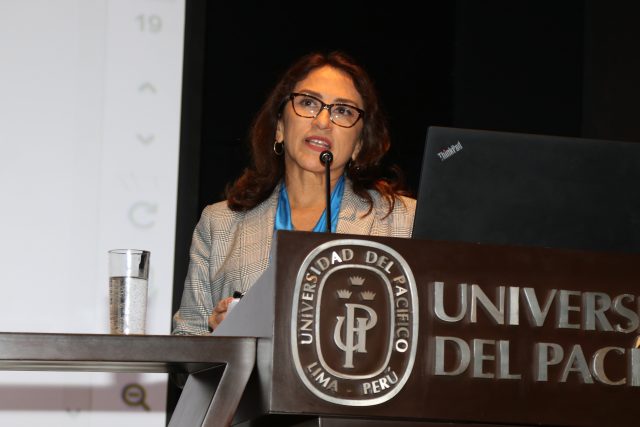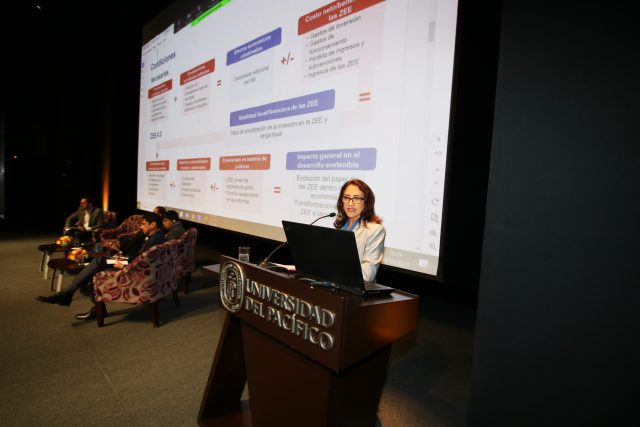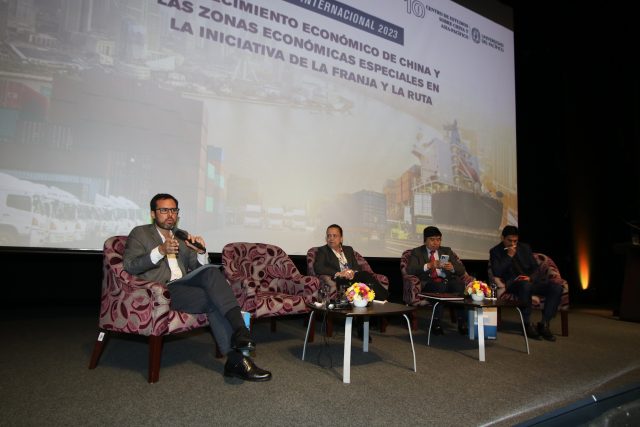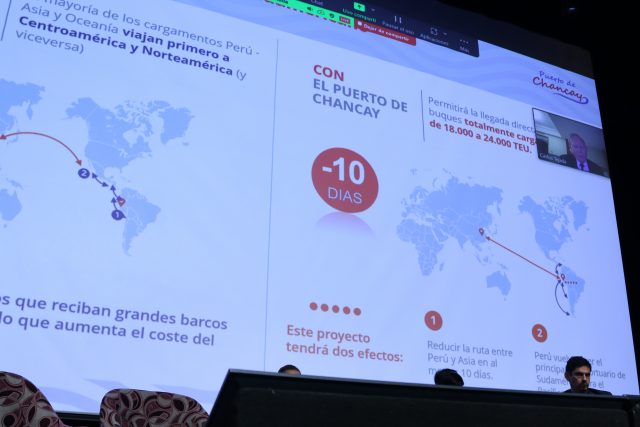The Center for China and Asia-Pacific Studies holds the international symposium “The Economic Growth of China and Special Economic Zones in the Belt and Road Iniciative”
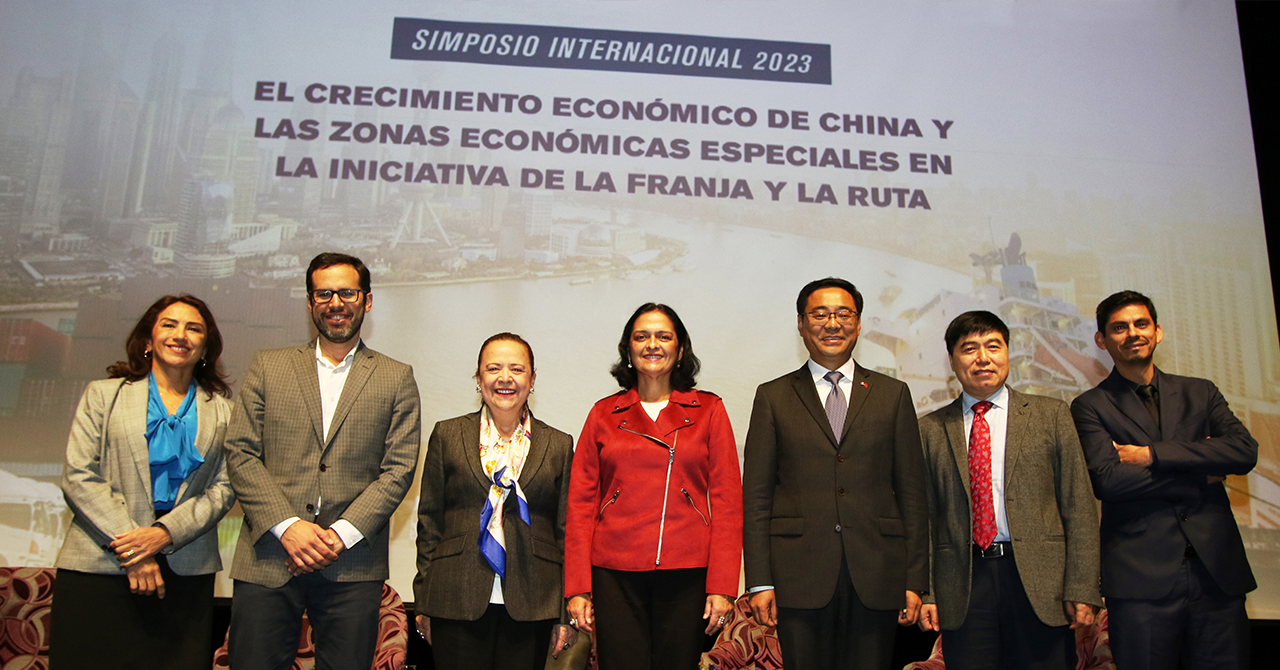
The event, attended by academics from China and Peru along with representatives of the private sector, examines China’s economic development and the establishment of Special Economic Zones (SEZ) in Peru.
On October 20, the Center for China and Asia-Pacific Studies at Universidad del Pacífico (UP) and the Institute of World Economics at Fudan University (China) co-hosted the international symposium “The Economic Growth of China and Special Economic Zones in the Belt and Road Iniciative” as part of the center’s 10th anniversary.
The symposium featured presentations by Wan Guanghua, Director of the Institute of World Economics, Fudan University (China); Chen Ying, Director of the Institute of Economics, School of Economics, Yunnan University (China); Carlos Tejada, Deputy General Manager of COSCO SHIPPING Ports Chancay PERU S.A; and Teresa Mera, Vice Minister of Foreign Trade at Peru’s Ministry of Foreign Trade and Tourism.
The Symposium began with words of welcome from Arlette Beltrán, Vice President for Research at Universidad del Pacífico, followed by the opening speech by the Ambassador of the Republic of Peru to the People’s Republic of China, Marco Balarezo; and the Head of Business at the Embassy of the People’s Republic of China in the Republic of Peru, Ciwang Pingcuo.
The panel of commentators included Diego Macera, Director of the Peruvian Institute of Economics and the Central Reserve Bank of Peru; Dr. Rosario Santa Gadea, Director of the Center for China and Asia-Pacific Studies at UP; and Omar Narrea, professor at the School of Public Management and research affiliate at the Center for China and Asia-Pacific Studies at UP.
During the conference, Dr. Wan Guanghua spoke about the potential for economic growth in China, noting that if the country manages to increase domestic consumption, reduce inequality, deepen market-oriented reforms, improve policy stability and transparency, and manage geopolitical risks, it could grow by 5 to 6% over the next 10 to 15 years.
Yet in the words of Wan Guanghua, “It will be difficult for China to return to its moderate growth of 7% – 8% GDP. To do so, based on my own research, it will need to make a series of internal and external changes.”
Special Economic Zones (SEZ)
Special Economic Zones (SEZ) are areas that provide facilities and infrastructure support for the development of industrial and service activities through tax and regulatory incentives, while also creating jobs and boosting a country’s exports. According to Teresa Mera, Vice Minister of Foreign Trade at the Peruvian Ministry of Foreign Trade and Tourism, Peru has a total of eight SEZs but only four are fully operational: those located in Paita (Piura), Matarani (Arequipa), Ilo (Puno) and Zofratacna (Tacna).
“We are a country that has all the attributes to be able to position ourselves in all value chains,” said Carlos Tejada.
“Chancay port is a port that has been upgraded technologically from 1 to 4.0. The reduction of the crossing to Asia by ten days is going to change the economic geography of all South America,” concluded Omar Narrea.
All participants stressed that Peru has the resources to place itself in the value chains thanks to the SEZs, which are an important component of the Belt and Road Initiative but with characteristics adapted to the countries where they operate. Undoubtedly, Chancay Port will enable the development of SEZs to a level that could even equal that of Asian SEZs, and this could see the facility become the foremost logistics and industrial Hub in Latin America.
